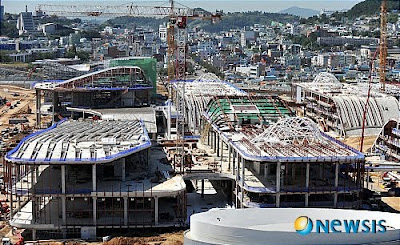Claire Lee in the Korea Herald looks at Shinan county's Jeung-do nearly four years after it was one of four areas in South Korea designated as "Slow Cities" in December 2007.
Being the first slow city of Asia, along with the completion of the bridge that connects the island to the peninsula ― which opened last year ― brought many changes to Jeungdo. As the number of visitors increased dramatically, the island faced more demand for accommodations and tour packages. This had both positive and negative impacts on the island, placing Jeungdo somewhere in between further development and the expected “slowness.”
For more about Jeollanam-do's "slow cities"---actually two cities and two rural counties---over the years:
* February 15, 2008: Jeollanam-do's slow cities.Nearly two years ago we read of Jeung-do in the JoongAng Daily that "A rare experiment to create an island free of cigarette smoking, cars and night lights has begun in Korea’s southern region." But in this month's Herald piece we see a conflicted Jeung-do:
* March 24, 2009: Jeollanam-do is a little slow.
* December 28, 2009: "Slow City" in Shinan working hard to stay slow.
Lee Jong-hwa, the representative of the local tour agency Gilbeot, on the other hand, has been receiving complaints from visitors and scholars, that Jeungdo isn’t “slow” enough. One of the scholars that contacted him pointed out that most buildings on Jeungdo are modern-day residential ones, carrying no particular aesthetic values. Unlike other slow cities in Korea, such as Changpyeong of South Jeolla Province or Yesan of South Chungcheong Province, Jeungdo doesn’t have any traditional Korean houses or ancient Buddhist temples. “He said we should in fact ‘create’ traditional homes, at least just to show the visitors, to serve the purpose of being a slow city,” Lee told The Korea Herald. “But we cannot live a lie for the sake of a slow city.”Still interested in visiting? Search the Korea Tourism Organization's webpage for a couple of articles on it. There are a couple of big---well, um, slow city big---festivals: the Slow Salt Village Festival (SLOW 소금마을 축제) from May to July at the Salt Village, and a Mud Festival



















